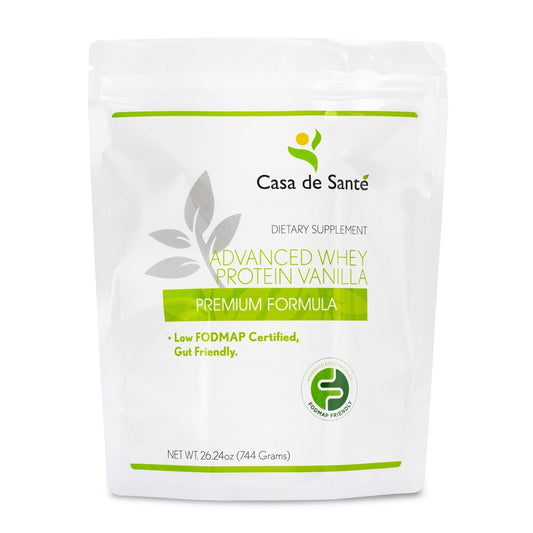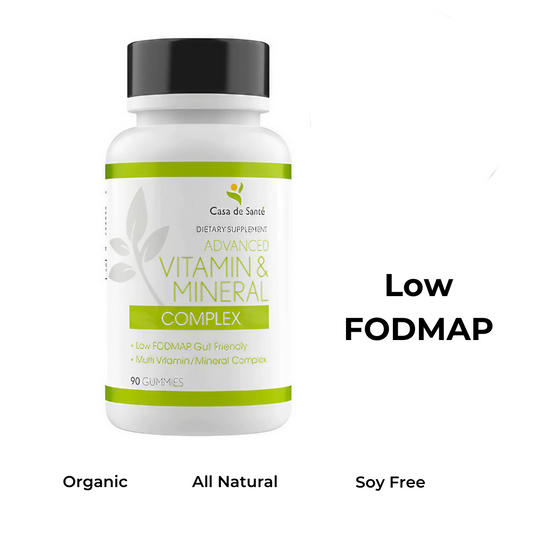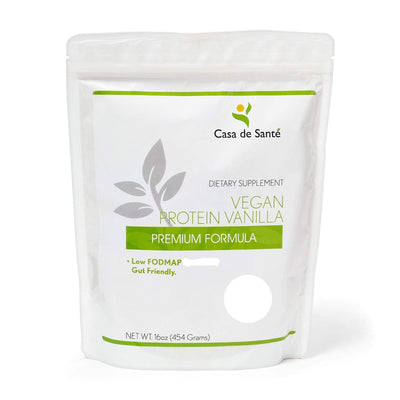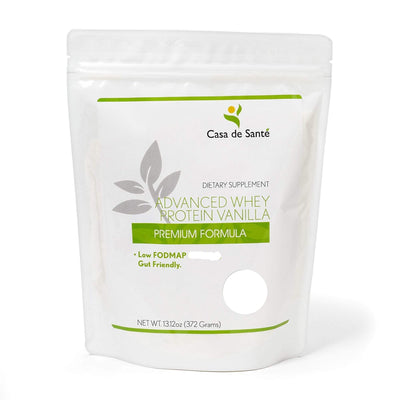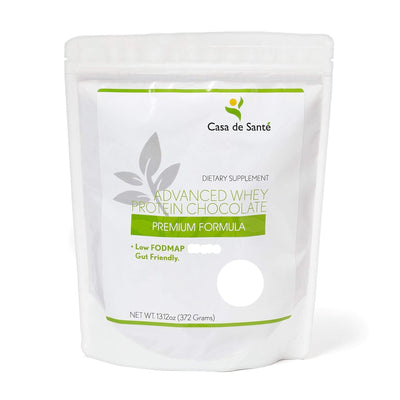Is Kefir Low FODMAP? A Guide to Digestive-Friendly Options
Is Kefir Low FODMAP? A Guide to Digestive-Friendly Options
Living with IBS or other digestive sensitivities often means carefully navigating the world of fermented foods. Kefir, a tangy cultured dairy drink packed with probiotics, has gained popularity for its potential digestive benefits. But for those following a low FODMAP diet, the question remains: is kefir a friend or foe to your sensitive gut? Let's dive into the complex relationship between kefir and FODMAPs to help you make informed choices about including this probiotic powerhouse in your diet.
Understanding Kefir and Its Nutritional Profile
Kefir is a fermented milk drink that originated in the Caucasus Mountains centuries ago. It's made by adding kefir grains (which aren't actual grains but colonies of yeast and beneficial bacteria) to milk, triggering fermentation. The result is a slightly effervescent, tangy beverage with a consistency somewhere between milk and yogurt.
Nutritionally, kefir is impressive. It contains high-quality protein, calcium, phosphorus, vitamin B12, and other essential nutrients. But what truly sets kefir apart is its probiotic content, which typically exceeds that of yogurt, with potentially 30+ strains of beneficial bacteria and yeasts that can support gut health.
The historical significance of kefir adds another fascinating dimension to this functional food. For generations, people in Eastern Europe and Western Asia have regarded kefir as a health elixir, attributing longevity and wellness to its regular consumption. The word "kefir" is derived from the Turkish word "keyif," which refers to feeling good after eating. Traditional production involved fermenting milk in bags made from animal hides, which were hung near doorways; the movement of people passing by would naturally agitate the mixture, aiding the fermentation process. This traditional method created a symbiotic relationship between the kefir grains and their human caretakers, as the grains require regular "feeding" with fresh milk to remain viable.
The Fermentation Process and Its Impact on FODMAPs
The fermentation process that creates kefir is fascinating from a FODMAP perspective. During fermentation, the live cultures consume much of the lactose (milk sugar) present in the milk. Lactose is a disaccharide FODMAP that many people with IBS struggle to digest. As these bacteria feast on the lactose, they convert it into lactic acid, which gives kefir its characteristic tang while simultaneously reducing its FODMAP content.
This bacterial action is why many lactose-intolerant individuals can tolerate kefir better than regular milk. The longer the fermentation process, the more lactose is consumed by the bacteria, potentially resulting in a lower FODMAP product. However, the fermentation is rarely complete, meaning some lactose typically remains.
The microbial composition of kefir also contributes to its potential digestive benefits beyond FODMAP considerations. The diverse ecosystem within kefir contains strains like Lactobacillus kefiri, which is unique to kefir and has been shown to inhibit the growth of harmful pathogens. Additionally, the bioactive compounds produced during fermentation include exopolysaccharides and bioactive peptides that may have anti-inflammatory and immunomodulatory effects. These compounds, along with the organic acids produced during fermentation, create an environment that can enhance mineral absorption and potentially improve overall gut barrier function—factors that may indirectly benefit those with FODMAP sensitivities by promoting a healthier digestive system.
Kefir and the Low FODMAP Diet: What the Research Says
According to Monash University, the global authority on FODMAP content in foods, traditional dairy kefir is considered high FODMAP in servings of 200g or more. However, smaller portions of about 125g (approximately 1/2 cup) may be tolerable for some individuals following a low FODMAP diet. This is because the lactose content, while reduced through fermentation, is still present in amounts that could trigger symptoms in sensitive individuals when consumed in larger quantities.
It's worth noting that FODMAP tolerance is highly individual. Some people with IBS may find they can include small amounts of kefir in their diet without triggering symptoms, while others may need to avoid it entirely, particularly during the elimination phase of the low FODMAP diet.
Lactose-Free and Plant-Based Kefir Alternatives
For those who are particularly sensitive to lactose but still want to enjoy the probiotic benefits of kefir, there are several alternatives worth exploring. Lactose-free kefir products have been treated with lactase enzyme to break down the remaining lactose, making them potentially suitable for a low FODMAP diet in appropriate serving sizes.
Plant-based kefirs made from coconut water, coconut milk, or other non-dairy bases can also be options, though their FODMAP content varies significantly depending on the base ingredient and manufacturing process. Coconut water kefir, for instance, is generally considered low FODMAP in small servings, while those made from high FODMAP plant milks like soy may not be suitable.
Commercial vs. Homemade Kefir: FODMAP Considerations
Store-bought kefir products often contain additives, flavorings, or sweeteners that could introduce additional FODMAPs. Many commercial fruit-flavored kefirs contain high FODMAP fruits or added sweeteners like honey or high fructose corn syrup, which can be problematic for those with IBS.
Homemade kefir gives you control over the fermentation time, potentially allowing for a longer fermentation that breaks down more lactose. However, without laboratory testing, it's difficult to know exactly how much lactose remains in your homemade batch, making portion control especially important.
How to Include Kefir in a Low FODMAP Diet
If you're interested in incorporating kefir into your low FODMAP eating plan, there are several strategies to consider. First and foremost, timing matters. During the strict elimination phase of the low FODMAP diet, it's generally recommended to avoid traditional dairy kefir. Once you move to the reintroduction phase, you can test your tolerance to small amounts.
Start with very small portions—perhaps just a few tablespoons—and gradually increase the amount if you don't experience symptoms. Pay attention to your body's response and keep a food diary to track any potential reactions. Remember that FODMAP tolerance is cumulative, so consider your overall FODMAP intake for the day when including kefir in your meals.
Low FODMAP Kefir Smoothie Recipe
One delicious way to enjoy a small portion of kefir is in a low FODMAP smoothie, where it's combined with other gut-friendly ingredients. Here's a simple recipe to try:
Low FODMAP Berry Kefir Smoothie
A refreshing, probiotic-rich smoothie that's gentle on sensitive digestive systems while providing beneficial nutrients and probiotics.
- 1/4 cup plain lactose-free kefir
- 1/2 cup strawberries (fresh or frozen)
- 1/4 cup blueberries
- 1 tablespoon maple syrup (optional)
- 1/2 tablespoon chia seeds
- 1/2 cup ice
- 1 scoop Casa de Sante Low FODMAP Certified Vanilla Protein Powder (optional for added protein)
- Add all ingredients to a blender.
- Blend until smooth and creamy.
- Pour into a glass and enjoy immediately.
Prep Time: 5 minutes
Cook Time: 0 minutes
Yield: 1 serving
Cuisine: International
Complementary Approaches for Digestive Support
While carefully portioned kefir might be part of your digestive health strategy, many people benefit from a multi-faceted approach to managing IBS and FODMAP sensitivities. Combining dietary strategies with targeted supplements can provide comprehensive support for your digestive system.
For those days when you've accidentally consumed high FODMAP foods or are experiencing digestive discomfort, digestive enzymes can be helpful allies. Casa de Sante offers low FODMAP certified digestive enzymes specifically formulated to help break down difficult-to-digest food components, potentially reducing gas, bloating, and discomfort after meals.
Probiotics and Prebiotics: Beyond Kefir
If you find that even small amounts of kefir trigger symptoms, you don't have to miss out on probiotic benefits. Specialized low FODMAP probiotic supplements can deliver beneficial bacteria without the FODMAPs that might come with fermented foods. Look for products that have been tested and certified as low FODMAP, such as Casa de Sante's probiotic and prebiotic supplements, which are designed specifically for those with sensitive digestive systems.
Prebiotics—the food that feeds beneficial gut bacteria—are equally important for gut health, but many common prebiotic foods are high in FODMAPs. Low FODMAP certified prebiotic supplements can help nourish your gut microbiome without triggering IBS symptoms, creating a more balanced digestive environment over time.
Personalized Nutrition Planning
Perhaps the most effective approach to managing IBS and incorporating foods like kefir is through personalized nutrition planning. Everyone's FODMAP tolerance is different, and what works for one person may not work for another. Working with a registered dietitian who specializes in digestive health can help you develop a customized plan that may include appropriate amounts of fermented foods like kefir.
For those who prefer a self-guided approach, resources like Casa de Sante's personalized low FODMAP meal plans can provide structure while allowing for customization based on your specific triggers and tolerances. These plans take the guesswork out of low FODMAP eating while ensuring nutritional adequacy and variety.
Conclusion: Can Kefir Fit Into Your Low FODMAP Lifestyle?
The answer to whether kefir is low FODMAP isn't a simple yes or no—it's "it depends." Factors including the type of kefir, serving size, fermentation time, and your individual tolerance all play important roles in determining whether this probiotic drink can be part of your digestive-friendly diet.
For many people following a low FODMAP diet, small amounts of traditional kefir (around 1/4 to 1/2 cup) may be tolerable, especially after the strict elimination phase. Lactose-free and certain plant-based kefirs might be even better options. As with any food on the low FODMAP diet, the key is mindful experimentation under appropriate guidance.
Remember that the goal of the low FODMAP diet isn't to restrict foods forever but to identify your personal triggers and expand your diet to be as varied and nutritious as possible while managing symptoms. With careful attention to portion sizes and product selection, kefir might become a beneficial addition to your gut health toolkit, offering probiotic benefits alongside other digestive support strategies like targeted supplements and personalized meal planning.








